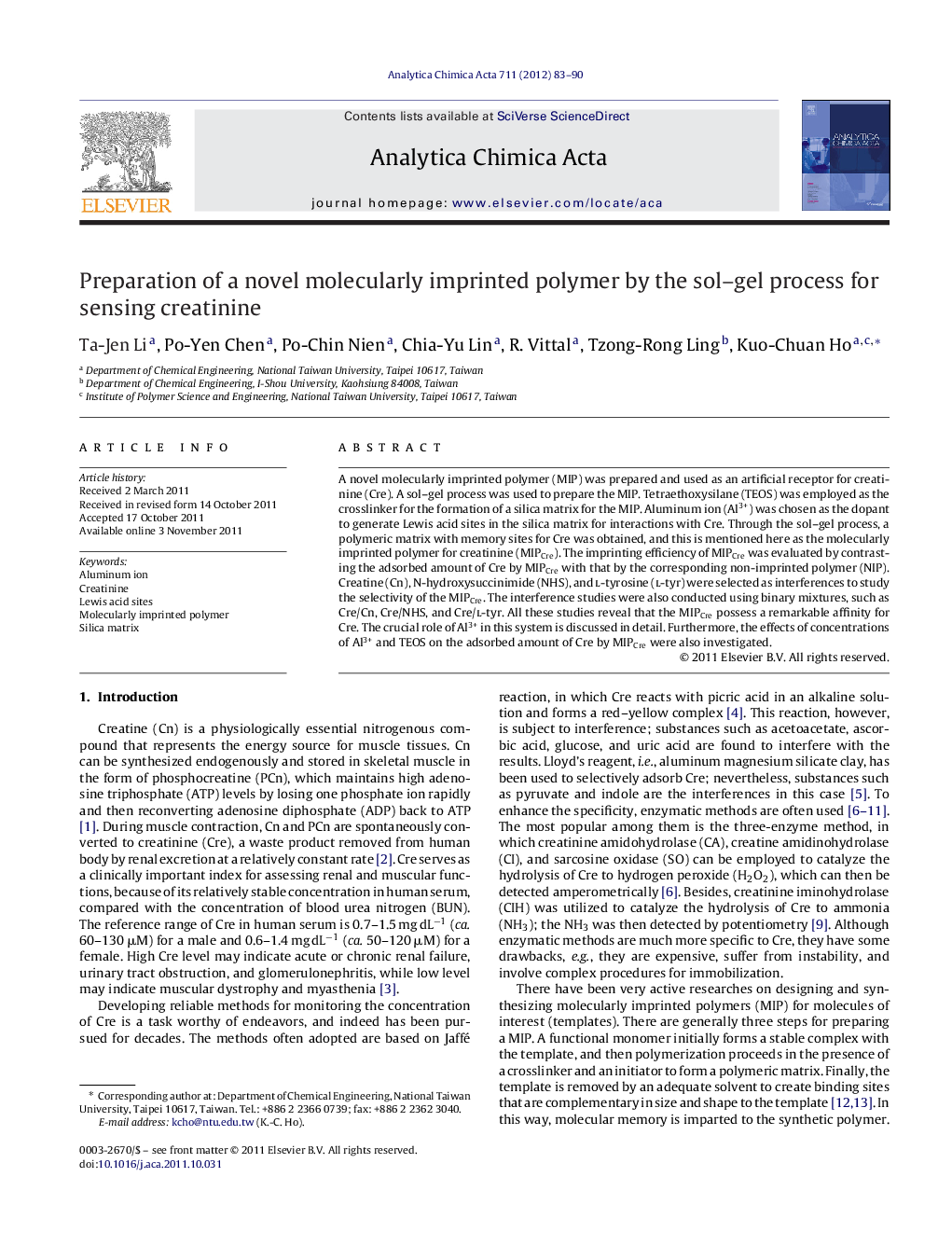| Article ID | Journal | Published Year | Pages | File Type |
|---|---|---|---|---|
| 1167006 | Analytica Chimica Acta | 2012 | 8 Pages |
A novel molecularly imprinted polymer (MIP) was prepared and used as an artificial receptor for creatinine (Cre). A sol–gel process was used to prepare the MIP. Tetraethoxysilane (TEOS) was employed as the crosslinker for the formation of a silica matrix for the MIP. Aluminum ion (Al3+) was chosen as the dopant to generate Lewis acid sites in the silica matrix for interactions with Cre. Through the sol–gel process, a polymeric matrix with memory sites for Cre was obtained, and this is mentioned here as the molecularly imprinted polymer for creatinine (MIPCre). The imprinting efficiency of MIPCre was evaluated by contrasting the adsorbed amount of Cre by MIPCre with that by the corresponding non-imprinted polymer (NIP). Creatine (Cn), N-hydroxysuccinimide (NHS), and l-tyrosine (l-tyr) were selected as interferences to study the selectivity of the MIPCre. The interference studies were also conducted using binary mixtures, such as Cre/Cn, Cre/NHS, and Cre/l-tyr. All these studies reveal that the MIPCre possess a remarkable affinity for Cre. The crucial role of Al3+ in this system is discussed in detail. Furthermore, the effects of concentrations of Al3+ and TEOS on the adsorbed amount of Cre by MIPCre were also investigated.
Graphical abstractFigure optionsDownload full-size imageDownload as PowerPoint slideHighlights► A novel molecularly imprinted polymer for creatinine (MIPCre) is prepared by using tetraethoxysilane and aluminum ion. ► The imprinting efficiency of MIPCre is confirmed in the Cre adsorption experiments. ► The MIPCre possesses excellent selectivities toward creatine (Cn), N-hydroxysuccinimide (NHS), and l-tyrosine (l-tyr). ► It is the Lewis acid sites rather than the silanol groups that mainly contribute to adsorbed amount of Cre by MIPCre.
